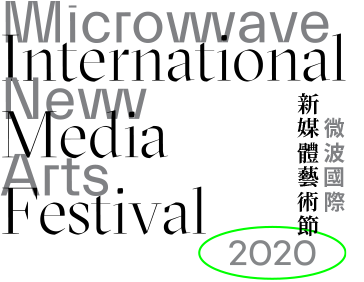

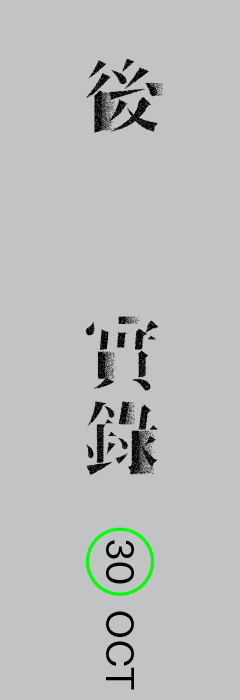
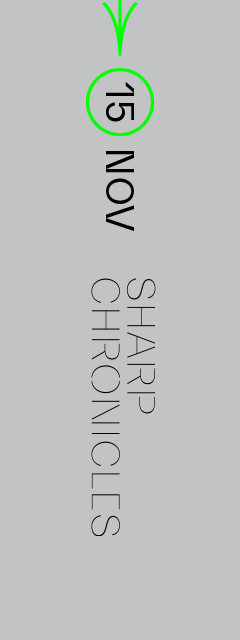




It manifests in unexpected contents and forms. It unrestrainedly infiltrates matters, domains, individuals and consciousness that it attempts to control and monitor, cancelling our privacy at any time and depriving us the freedom to survival while realizing full infiltration from the virtual realm to the physical world and achieving a total control over human consciousness and soul. Contemporary political powers take turn to evoke the spirits of “savior figures” and utilize “the faith and truth that is yet to come and yet to realize” to extend and enhance governance technology. The combination of contemporary technology and authoritarian regimes will give rise to a “ghost-like,” super-efficient governance system that is ubiquitous and unprecedented, surpassing the Orwellian totalitarianism.
The panoptic view of power in the virtual world: in the era of “post-new media,” power assumes the form of virtual data, streaming into a massive, self-operating network. Surveillance cameras, sensors and identification systems at every possible corner constitute an Internet of Things. In front of “huge data,” the so-called private information becomes transparent. The virtual world of internet creates an alternative panopticon, whereas the governance technology enabled by big data evolves into the new power structure. Electronic information technology replaces physical walls and watch towers to deprive humanity the right to enjoy freedom—it has become the primary strategy to achieve social governance. Like what is depicted in the dystopian novel 1984, “Big Brother” is an omnipresent power.
People have mistaken “freedom” as a concept related to rights and obligations in “the public sphere”; in truth, the value and realization of freedom is in “the private sphere”—it is realized in the sense that people can be free to desire, in the private space of the psyche, unintentional oblivion or deliberate breaches of public discipline. So, the power of watching is not in the hands of the “monitor” but in those of the “monitored.” Freedom as psychological privacy cannot withstand drawn-out surveillance, up-front gaze or sideline observation; on the contrary, freedom only exists in the concealed, inner and invisible space.

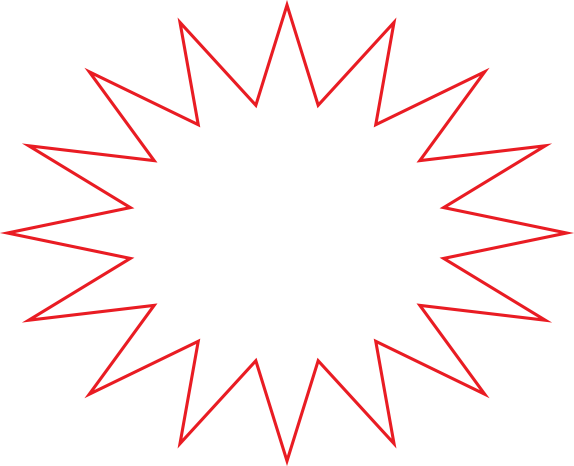
當代科技治理之術,在任何時候都是一種「看不見的來臨者」,治理技術隨著時代的推進,變得越來越潛伏,越來越沒有規則,而且無處不在,隨時以人們意想不到的內容和形式現身,肆意滲入它欲控制和監管的事物、領域、個人、意識之中,使得我們隨時都有可能被驅趕出自己的私密領域、被剝奪生存的自由,實現從虛擬到實體的全面滲透,對意識與靈魂的全面控管。當代政治輪流召喚「救世主」、「偉人」的英靈。一種「從未到來、尚未實現的信仰與真理」以便延展、增強統治技術。使得當代技術加上威權專制,將超越歐威爾式極權,形成一個像「幽靈」般,無所不在、前所未有的超高效統治系統。
虛擬世界中權力的全景:「後新媒體」時代,權力化身為虛擬的數據,串流而成巨大的、自動運行的網絡。無處不在的監視器、感應器以及身分辨識系統,形構成物聯網,在無所不在的巨型數據(Huge data)面前,以隱私稱之的資訊皆能一覽無遺。虛擬網路世界建構了另類的全景敞視監獄,而大數據讓治理技術,演化為新的權力結構。電子資訊技術將取代實體的圍牆和看守塔,以實現剝奪人自由的權利,成為社會治理的主要手段。如同反烏托邦小說《一九八四》中「老大哥」是一個無所不在的權力中心。
人們誤以為「自由」屬於「公共領域」的權利義務關係,實則,自由的可貴及其實現的場所在「私密領域」,它表現在:人們渴望於精神密室中,對公共規訓不經意的漠視或蓄意的背叛。因此,觀看的權力並非掌握在「監視」者,而是「被監視」本身,因為作為精神私密的自由,經不住長期的監看、正面的凝視或側面的旁觀。自由只有在遮蔽、內藏、隱身的空間中,才能存在。




Artist biography 藝術團隊簡介
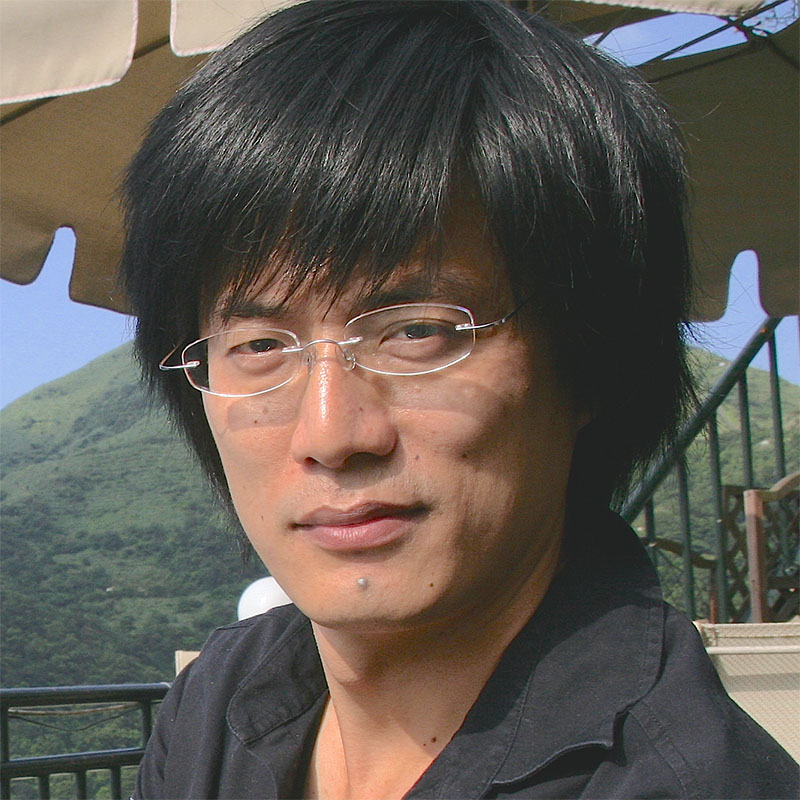
Tao Ya-Lun
Tao Ya-Lun, who is pioneering new media arts in Taiwan, is serving as a full-time faculty member at College of Communication of National Chengchi University. Invited to the 9th Contemporary Audio-Visual & New Media Arts Festival (MADATAC) in Madrid, Spain, and won the New Media Art Installation Award. Granted by Taiwan Fellowship Program of Asian Cultural Council to visit the United States as exchange scholar, invited to be the artist-in-residency by Headland Center of the Arts in San Francisco and sponsored by Hong Kong Arts Development Council to be the first artist-in-residency at 1a space. He took up residence at Nordic Institute for Contemporary Art that is famous for digital images and technology arts as well. Honored with the first prize of the scholarship program from Cite Internationale des Arts, Paris, and was awarded outstanding alumnus of Tainan National University of the Arts.
陶亞倫
國立台灣師範大學美術系學士。
國立台南藝術學院造型藝術研究所第一屆碩士。
現任國立政治大學傳播學院教授。
為台灣新媒體藝術的先鋒。曾獲MADATAC馬德里當代科技與影音藝術大獎、台灣當代藝術最具代表性的台北獎、台北縣政府獎;代表華人藝術界最具有當代藝術精神的李仲生當代繪畫創作獎,為歷屆最年輕的得獎人;為美國亞洲文化協會(洛克菲勒兄弟基金會)台灣獎助計畫之受獎人,以交換學者身分赴美參觀與訪問;獲美國舊金山赫德蘭藝術中心Headland Center for the Arts邀請為駐村藝術家;受香港1a space藝術空間邀請與香港藝術發展局贊助,為1a space第一位駐場藝術家;以及數位影像與科技藝術頗負盛名的北歐當代藝術中心Nordic Institute for Contemporary Art之駐場藝術家;獲巴黎西帖國際藝術村工作室獎學金第一名;受波士頓市政府之邀為波士頓交換藝術家。
獲西班牙MADATAC邀請個展於馬德里Media Lab Prado。西班牙San Lorenzo del Escorial市長邀請,個展於該市文化中心。2009年獲奧地利林茲OK Center邀請,於該中心舉辦大型個展。並曾受邀個展於台北數位藝術中心、台北市立美術館、北歐當代藝術中心、香港視覺藝術中心、舊金山赫德蘭藝術中心、關渡美術館、伊通公園、双方畫廊等地。
作品亦受邀展出於雅典數位藝術節。雅典SYNTOPIA電子藝術展。德國威瑪藝術節。意大利威尼斯雙年展。柏林transmediale跨媒體藝術節。美國聖塔菲國際新媒體藝術節。波蘭波茲南(調解)雙年展。巴黎EP7藝術空間。北京中國美術館、北京山水美術館、上海藝倉美術館、韓國光州市立美術館、首爾市立美術館、廣東美術館、香港藝術中心、澳洲黃金海岸市立美術館、橘市美術館、坎培拉Drill Hall美術館、雪梨大學美術館、墨爾本皇家科技學院美術館、伯斯P.S Art space、伯斯弗里曼特雙年展、紐西蘭威靈頓Aden美術館、紐約台北藝廊、紐約The Sylvia Wald and Po Kim Art Foundation、意大利米蘭國立藝術學院、芬蘭北歐當代藝術中心、馬尼拉菲律賓文化中心、北京索卡藝術中心、台灣美術館、台北市立美術館、高雄市立美術館、台北當代藝術館、帝門藝術中心、伊通公園、鳳甲美術館、双方畫廊、忠泰美術館…等地。
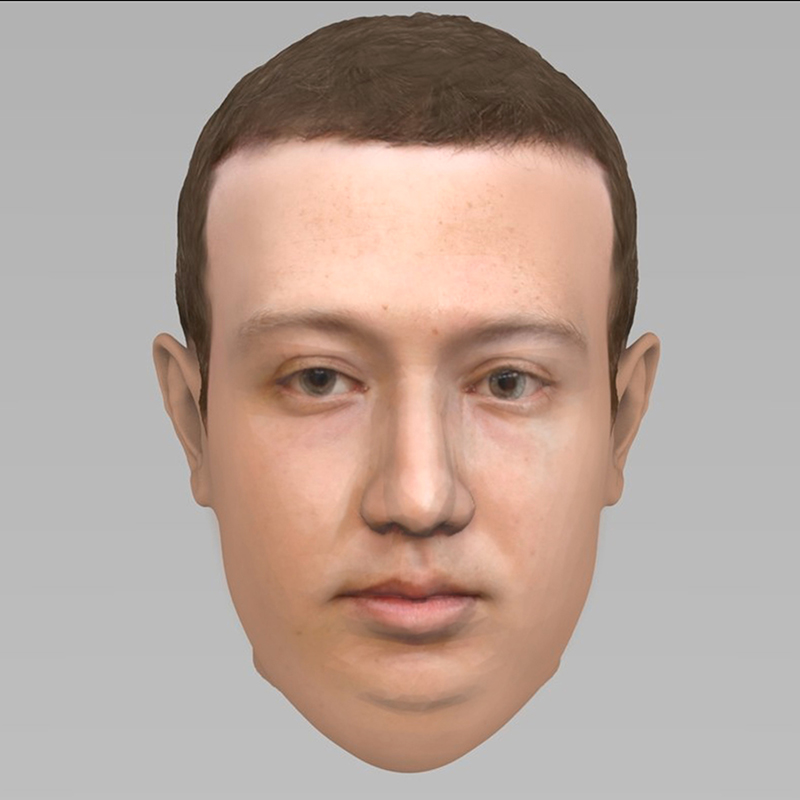
Shih Yi-Shan
The founder for the Air Autogenous Power Manifesto — is chiefly interested in technology, arts, new media, cultural phenomena and cryptozoology.
施懿珊
空中自體動力宣言( 創辦人)。關注,科技、藝術、新媒體、文化現象與神秘動物學。
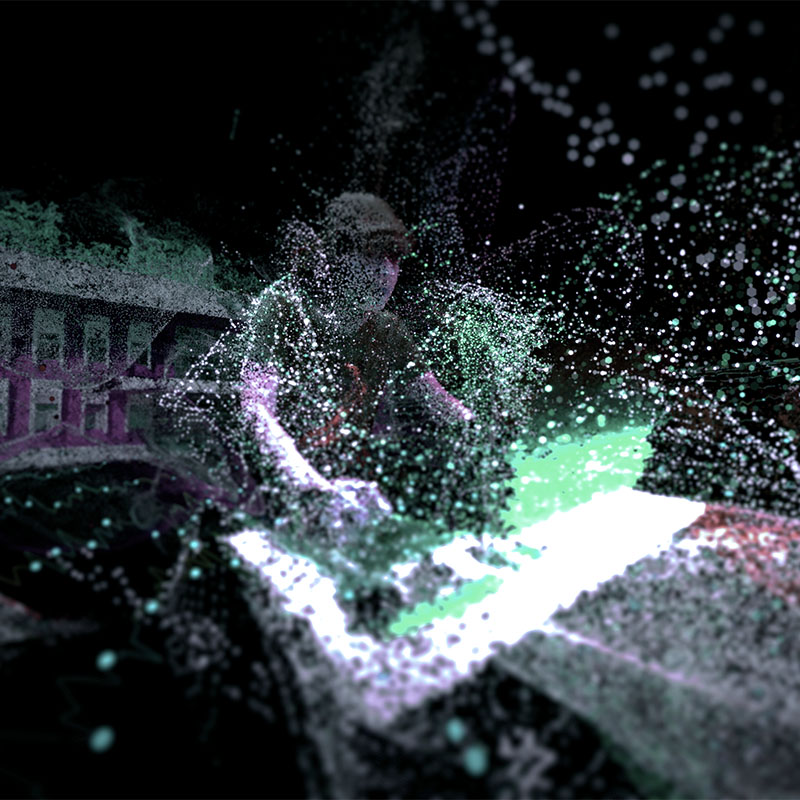
Chen Pin-Chen (Yea Chen)
Chief Technology Officer at ChillProduction, a performing arts-based multimedia developer, specializing in visual programming and shading languages. Past experiences include stagecraft, digital control, carpentry, ironworks, cinematography and lighting, editing and post-production, drawings, graphics and optical techniques, machine vision theory, fundamentals of electronics, network communication, computer programming, as well as basic narrative theory.
陳品辰
基於表演藝術的多媒體開發者,擅長節點式編程、著色器語言。
實務經驗包含舞台技術、機關、數位控制、木工與鐵工、電影攝影與燈光、剪輯與後期、繪畫、圖學與光學技巧、機器視覺原理、基礎電子工作、網路通信、程式設計、基礎敘事理論,既多且雜且淺。
因此較能用既存工藝上的多視角來檢視與尋找將其轉化為數位工法之途徑。
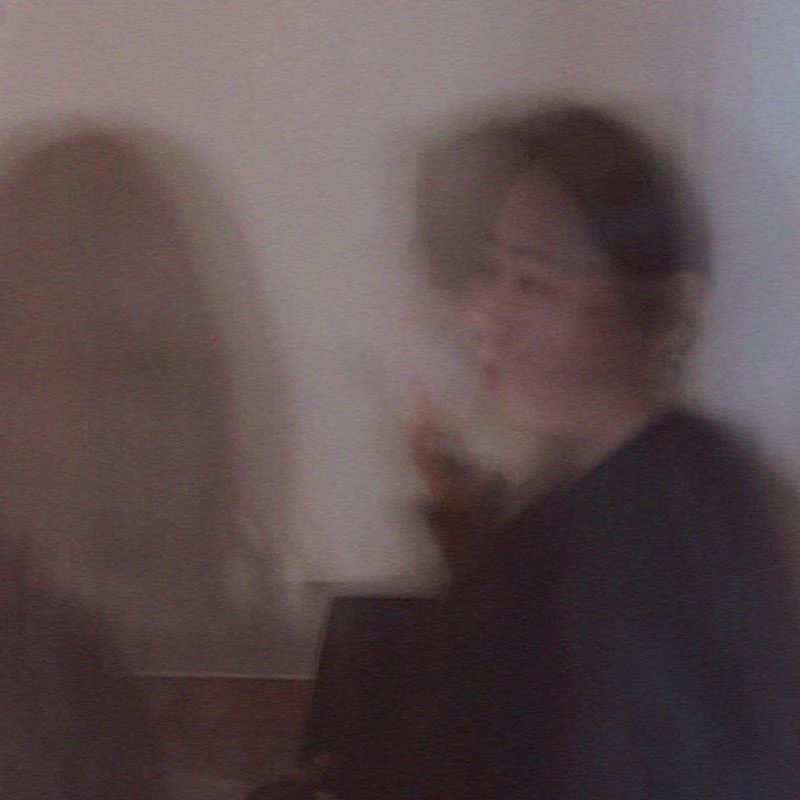
Wu Po-Yao
New media artist, specialize in system integration and interdisciplinary cooperation and currently study artificial intelligence generated art.
吳柏瑤
新媒體藝術家,擅長硬軟體整合與跨領域合作,目前鑽研人工智慧生成創作。
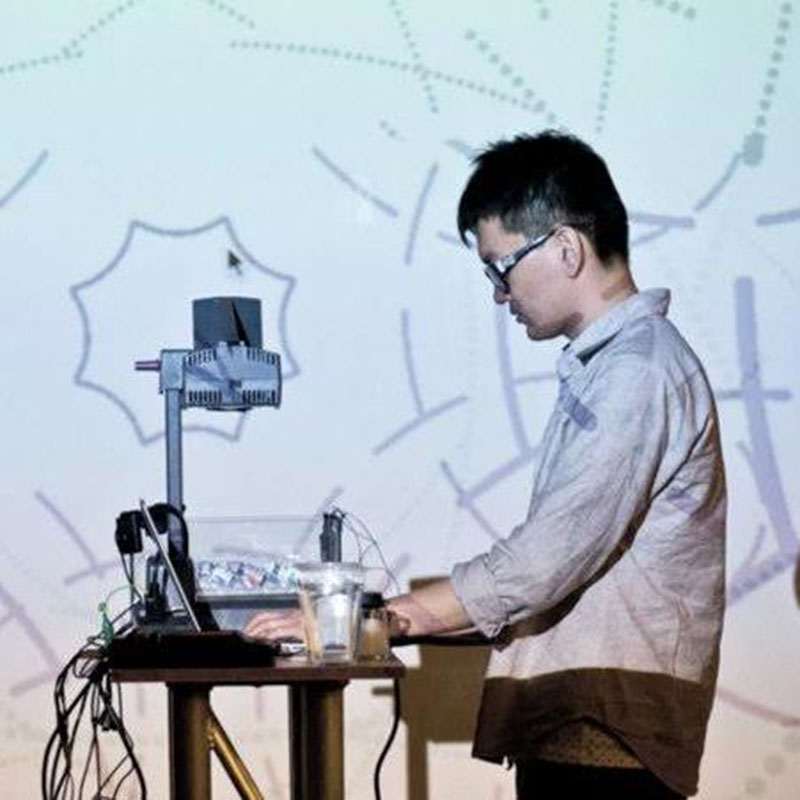
Tsai Chi-Hung
Born in 1986, Chi-Hung was inspired by some professors then stepped into the field of new media art from the information engineering background. Obtained a master degree in new media art of Taipei University of Arts, Chi-Hung started to create art in different formats of ‘information’. Now he is the co-founder of WINNOWORK and a software freelancer, dedicating in creating the combination of analog and digital signal, and also exploring the distinctive connection between multi-media and spectators’ perceptions through electronic control, interactive sensor, and also audio application and performance. Recently, through a cross-disciplinary viewpoint, he has entered the domain of new media theatre and specialized in electronic, mechanical, motive remote control to the applications/installations with integrated lighting system.
蔡奇宏
從資訊背景跨入新媒體藝術領域,畢業於國立臺北藝術大學新媒體藝術研究所,創辦沃手工作新媒體藝術團隊執行過許多戶外燈光裝置作品,個人主要致力於將類比與數位以多種方式進行混合。擅長軟硬體整合包含開發互動程式介面、電子電路控制、製作互動感測裝置、聲音裝置表演、電腦視覺與辨識、自主研發演算法、數位自造相關創新技術等,整合各種技術形式來探索不同媒材之間的可能性。